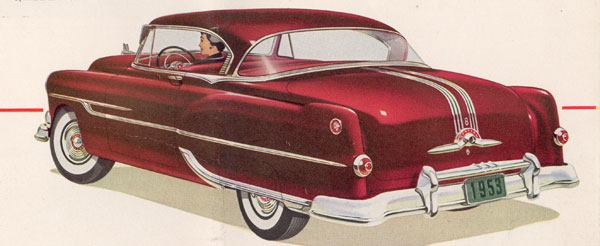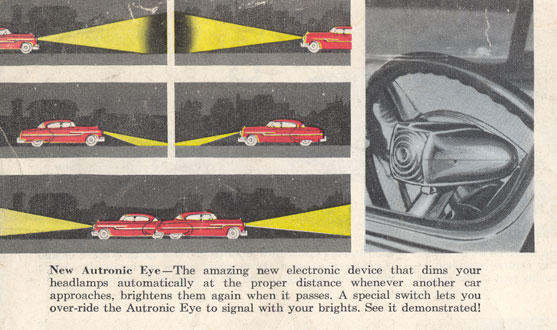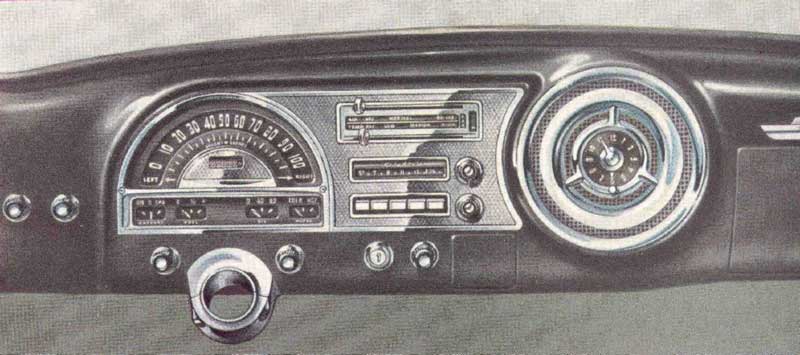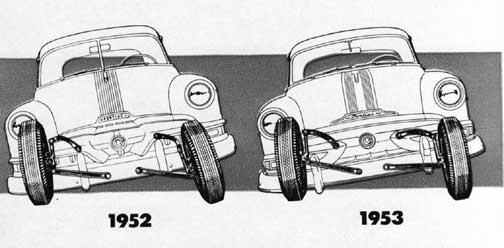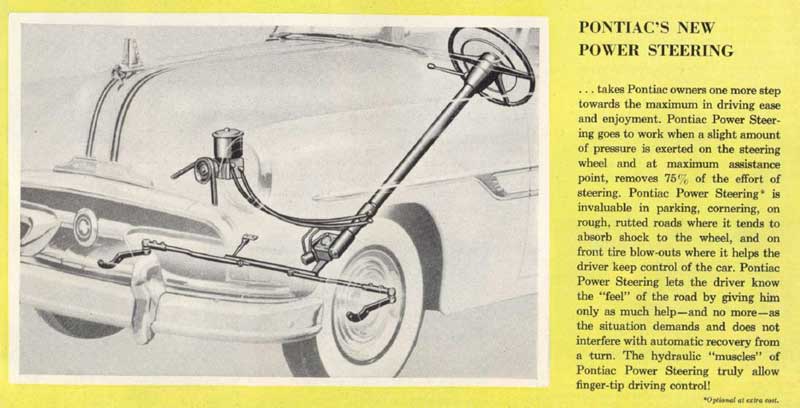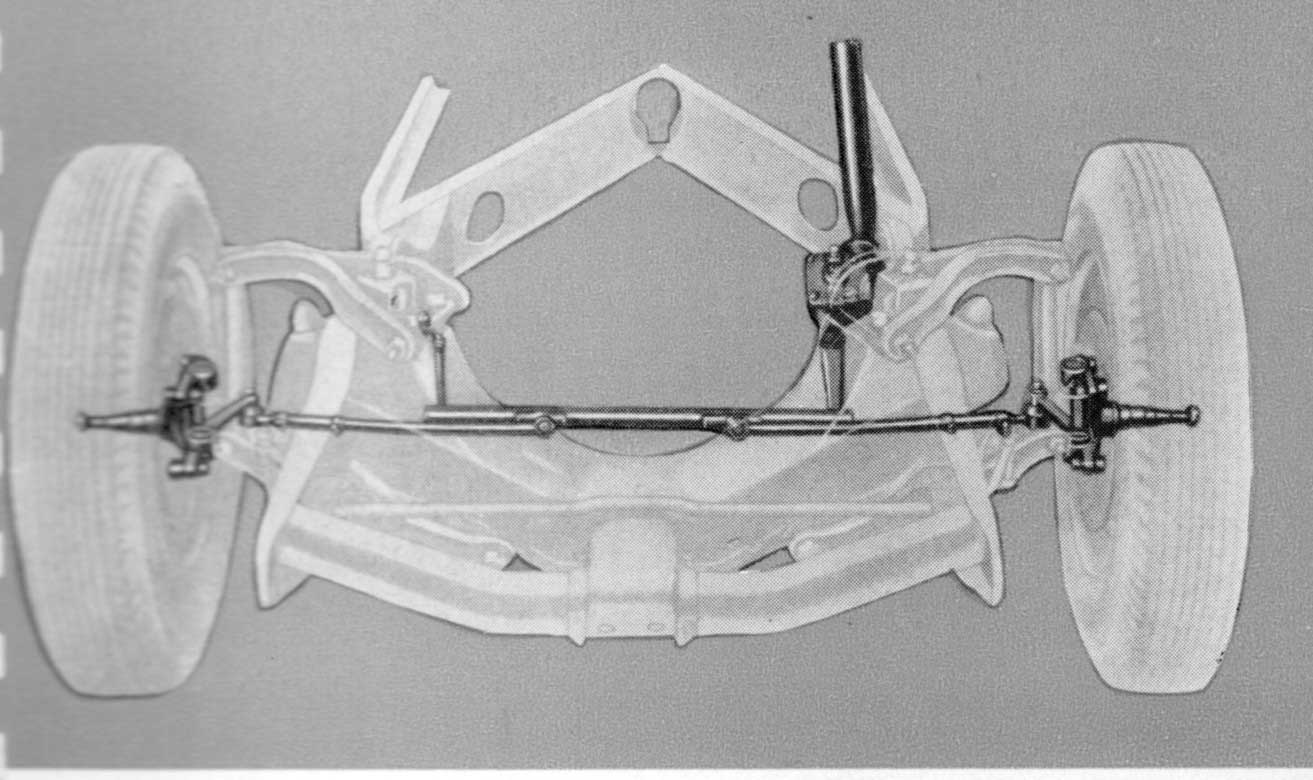

Pontiac sported a new body for ’53 featuring a one-piece windshield, a wrap-around rear window and a flatter deck lid that more abruptly ended, increasing the trunk capacity. The ’53 models were only fractionally different in size then their ’52 counterparts but styled to look longer and lower.
The straight eight and Hydra-Matic both carried over from ’52, even to the very same horsepower rating of 122 @ 3,600. The six was dramatically improved with aluminum pistons, new camshaft and a 2 barrel carburetor, increasing its ‘52 power rating of 102 with Hydra-Matic to 118 @ 3,800 in 1953!
The wheelbase grew 2 inches for ’53 to 122” and the front suspension geometry was revised with different control arms and mounting points; which resulted in the wheels actually following a curve instead of wanting to “track” in the opposite direction. These suspension components all look very similar so you need to know what model year they came from if you’re shopping a swap meet or salvage yard.
I’ve included an illustration of the steering linkage; this “link parallelogram” system dates from 1940 on the Pontiac chassis but is still used today on vehicles that don’t have rack & pinion steering gear. It is a big improvement over the earlier type that had long tie-rods connecting to a centrally mounted bell-crank on the cross-member. Chevrolet used the bell-crank system up into the early ‘50’s as did other low-priced cars. Pontiac also used a front stabilizer bar on their chassis, another feature of more expensive cars that greatly contributed to the handling and control of the car.
The straight eight and Hydra-Matic both carried over from ’52, even to the very same horsepower rating of 122 @ 3,600. The six was dramatically improved with aluminum pistons, new camshaft and a 2 barrel carburetor, increasing its ‘52 power rating of 102 with Hydra-Matic to 118 @ 3,800 in 1953!
The wheelbase grew 2 inches for ’53 to 122” and the front suspension geometry was revised with different control arms and mounting points; which resulted in the wheels actually following a curve instead of wanting to “track” in the opposite direction. These suspension components all look very similar so you need to know what model year they came from if you’re shopping a swap meet or salvage yard.
I’ve included an illustration of the steering linkage; this “link parallelogram” system dates from 1940 on the Pontiac chassis but is still used today on vehicles that don’t have rack & pinion steering gear. It is a big improvement over the earlier type that had long tie-rods connecting to a centrally mounted bell-crank on the cross-member. Chevrolet used the bell-crank system up into the early ‘50’s as did other low-priced cars. Pontiac also used a front stabilizer bar on their chassis, another feature of more expensive cars that greatly contributed to the handling and control of the car.
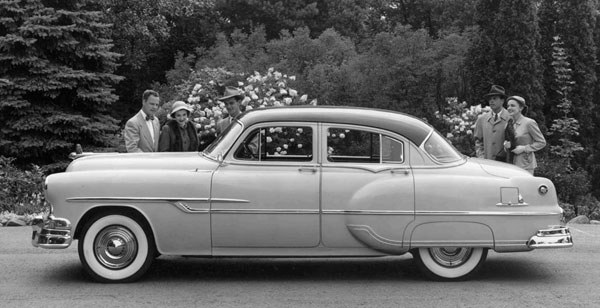
The instrument panel was all new in ’53 and a significant change from the ’49 thru ’52 models; the starter button was gone in favor of a turn-key ignition switch. The new panel also housed the heater defroster controls and radio, if equipped; all in all a comprehensive design unlike many other cars of the day that tacked on accessory controls haphazardly.
Power steering became available for the first time in ’53, a long awaited feature. The steering ratio was the same 25:1 whether manual or power-assisted, but it did make driving much easier. The other new option for ’53 was Autronic Eye headlamp dimming; this was also available on Olds and Cadillac. The remaining options were all carried over from 1952.
Power steering became available for the first time in ’53, a long awaited feature. The steering ratio was the same 25:1 whether manual or power-assisted, but it did make driving much easier. The other new option for ’53 was Autronic Eye headlamp dimming; this was also available on Olds and Cadillac. The remaining options were all carried over from 1952.
